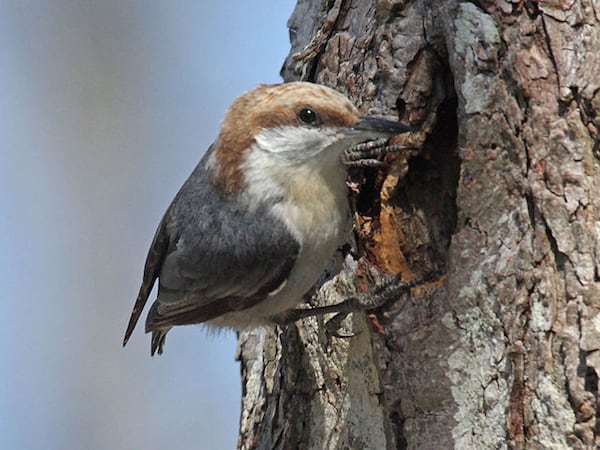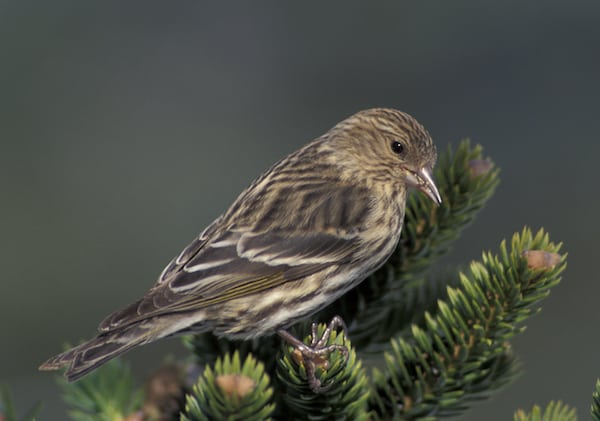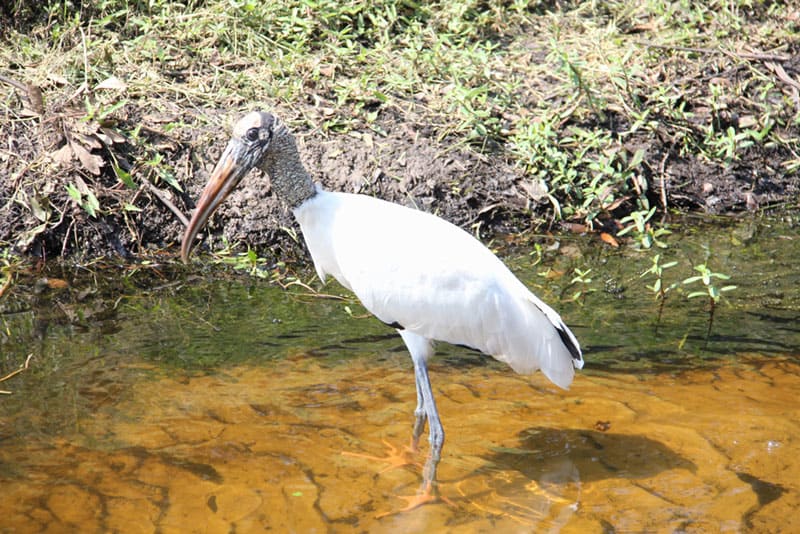1. Everglades National Park
Everglades National Park is one of the most unique wetland systems in the world, although it has been greatly reduced in size by drainage and the construction of hundreds of miles of dykes and levees. Nowadays the park covers more than 1.5 million acres, making it the largest national park in the eastern United States. It is home to large rookeries of herons, egrets, spoonbills, ibises, and wood storks, as well as wintering populations of many species including hundreds of American white pelicans. Florida specialties that occur in the Everglades include the snail kite (mainly northern glades), mangrove cuckoo, white-crowned pigeon (mainly as a nonbreeding visitor), greater flamingo, and short-tailed hawk (in winter). A number of hardwood hammocks attract migrant and wintering land birds.
Park headquarters: 40001 SR-9336, Homestead, FL 33034.
Phone: (305) 242-7700.
2. Florida Keys and Dry Tortugas
The best time for a visit to the Keys and dry Tortugas is in April, when migrant land birds arrive in numbers (especially on the Tortugas) and seabirds are also nesting. Breeding specialties on the Dry Tortugas include huge numbers of sooty terns, brown noddies, magnificent frigatebirds, a few masked boobies on Hospital Key, and small numbers of roseate terns. Black noddies (at the coal dock on Garden Key), bridled terns, and brown boobies are regular nonbreeding visitors to the waters around the Tortugas. Specialties to be found on the Keys include gray kingbird, black-whiskered vireo, mangrove cuckoo, and white-crowned pigeon.
For passage to the Dry Tortugas contact the Yankee Fleet at
800-634-0939 or (305) 294-7009.
For entrance permit to Key Largo Hammocks contact John Pennekamp State Park. (305) 451-1202.
3. Loxahatchee National Wildlife Refuge
Loxahatchee lies southwest of West Palm Beach and can easily be reached from either the Florida turnpike or Interstate 95. The birdlife to be found here is similar to that of Everglades National Park, with good numbers of herons and egrets and nesting anhingas. In winter many waterfowl and shorebirds can be found here on the impoundments, and there is a boardwalk through a cypress swamp which attracts wintering land birds. Loxahatchee is one of the best places to look for the declining smooth-billed ani, and snail kites may sometimes be visible from the levee.
Park headquarters: 10216 Lee Road, Boynton Beach, FL 33437.
4. Merritt Island National Wildlife Refuge
The refuge covers almost 84,000 acres and can easily be reached from US 1 in Titusville. It is famous as the last refuge of the dusky seaside sparrow, which is now extinct as a result of human flooding of its marshland habitat. Nevertheless, Merritt Island attracts thousands of waterfowl of many species and large numbers of American coot in winter, as well as large flocks of migrant and wintering shorebirds, gulls and terns, herons, egrets (including good numbers of reddish egrets), spoonbills, and American white pelicans. Areas of scrub harbor one of the largest remaining populations of Florida scrub-jays. The Black Point Wildlife Drive can be particularly productive, and northern gannets can bee seen off the beach at Playalinda in the
winter.
Park headquarters: P.O. Box 6504, Titusville, FL 32782.
Phone: (407) 861-0667.
5. Corkscrew Swamp Sanctuary
Corkscrew Swamp is owned and administered by the National Audubon Society and is justly famous for its huge nesting colony of wood storks that has exceeded 1,200 pairs in recent years. An extensive boardwalk system allows access to one of the finest remaining cypress swamps in Florida. Other species to be found here include herons and egrets, barred owl, limpkin, swallow-tailed kite, pileated woodpecker, and migrant and wintering passerines such as painted bunting.
Headquarters: 375 Sanctuary Road, Naples, FL 33964.
Phone: (941) 657-3771.
6. Ding Darling National Wildlife Refuge
Sanibel Island can be reached by a causeway from Fort Myers. Ding Darling refuge covers more than 6,000 acres of brackish marshes, mangrove swamps, and hardwood hammocks. There is a five-mile-long wildlife drive that allows access to some good birding. Species to look for here include reddish egret, roseate spoonbill, anhinga, both species of night-herons, black-whiskered vireo, gray kingbird, and mangrove cuckoo. Shallow pools attract good numbers of shorebirds.
Park headquarters: #1 Wildlife Drive, Sanibel, FL 33957.
Phone: (941) 472-1100.
7. Ocala National Forest
The forest covers almost 400,000 acres of sand pine forest, with small areas of longleaf pines that are the best birding habitat. A visit in late spring or early summer will be most productive. Breeding species to be found here include the rare re-cockaded woodpecker, as well as red-headed woodpecker, brown-headed nuthatch, Bachman’s sparrow, swallow-tailed kite, chuck-will’s widow, bobwhite quail, summer tanager, yellow-throated vireo, and pine warbler. The area hosts one of the largest remaining populations of Florida scrub-jays.
Visitor center: 10863 East Highway 40, Silver Springs, FL 24488.
Phone: (904) 625-7470.
8. Fort DeSoto County Park
Fort DeSoto is located on Mullet Key just south of St. Petersburg. It is a renowned migration hotspot due to its geographical location. In spring especially, thousands of land birds of many species can be found here including at least 25 warbler species, tanagers, orioles, grosbeaks, buntings, vireos, cuckoos, and thrushes. The best areas for migrants are East Beach Woods, the North Beach parking area, Arrowhead Picnic Area, and the mulberry trees around the ranger’s house. The intertidal areas attract large numbers of terns and shorebirds in fall, winter, and spring, including an occasional long-billed curlew, as well as snowy, piping, and Wilson’s plovers.
Park headquarters: 3500 Pinellas Bayway South, Tierra Verde, FL 33715.
Phone: (727) 866-2484.
9. Honeymoon Island State Recreation Area.
Honeymoon Island can be reached via a causeway from Dunedin. This is one of the best areas for migrant and wintering shorebirds in Florida. Up to 22 species can be found here regularly in fall, winter, and spring. Honeymoon and surrounding barrier islands hold the largest wintering population of piping plovers in the state, sometimes over 100 birds. In addition, thousands of terns congregate here in fall including up to 5,000 common terns at a time and smaller numbers of six other species. Wilson’s and snowy plovers and least terns breed here, as do great horned owls and clapper rails. Both Nelson’s and saltmarsh sharp-tailed sparrows winter. The slash pine woods along the Osprey Trail harbor a breeding population of over osprey 20 pairs. Gray kingbirds and prairie warblers are common in the spring and summer. Black-whiskered vireos used to nest and may still do so occasionally.
Headquarters: 1 Causeway Blvd. Dunedin, FL 34698.
Phone: (727) 469-5942.
10. St. Marks National Wildlife Refuge
St. Marks covers about 100,000 acres of woodlands, marshes, and impoundments. It is justly famous as probably the best site for wintering waterfowl in Florida. At that season over 20 waterfowl species can be found there, including small numbers of snow geese. Woodland areas attract wintering land birds, and breeding species here include Wilson’s plover, gull-billed tern, marsh wren, and seaside sparrow.
Headquarters: P.O. Box 68, St. Marks, FL 32355.
Phone: (904) 925-6121.





Lake Apopka North Shore should be in this list with over 370 species reported, known for rarities showing up, 11 mile wildlife drive open Fri-Sun, 18.2 Lake Apopka Loop Trail section, 4 trailheads, covering 20,000 acres. Access to paddling, boating, hiking, biking, and great birding and photography. Sod fields get shorebirds, upland at Green Mountain Scenic Overlook & Trailhead great for warblers and other passerines, winter bring ducks by the thousands! I’ve had 90 species easily on a good day hiking out here.